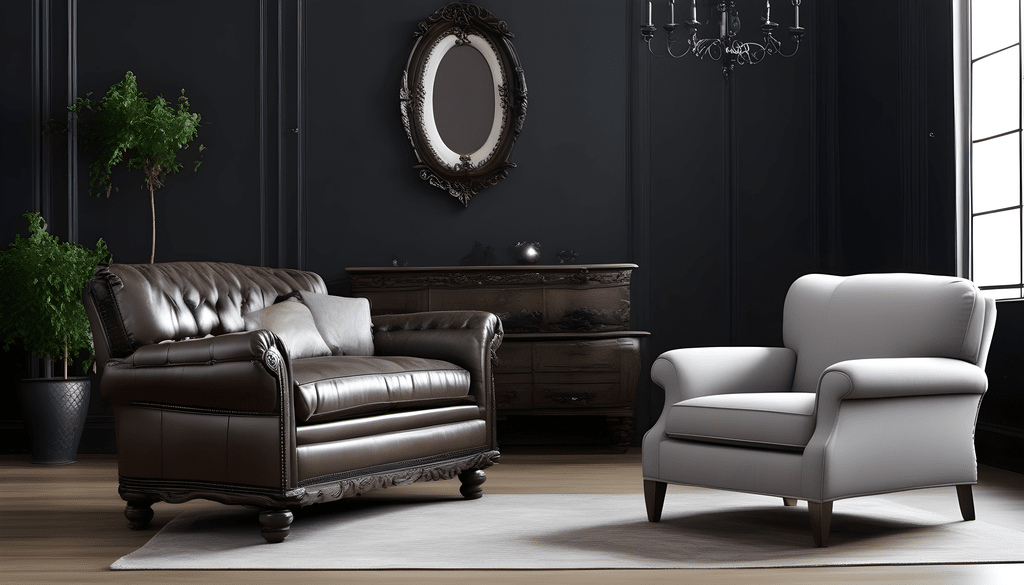Selecting the ideal furnishings for your house might be difficult. With so many alternatives at your disposal, it’s critical to make choices based on your own requirements and preferences. There are a number of things to think about, including knowing your space and taking usefulness, style, material quality, comfort, ergonomics, and budget into mind. This post will walk you through every stage of the procedure, assisting you in making the best decisions and designing a stunning, useful, and cozy living area.
Understanding Your Space
It’s crucial to conduct a comprehensive assessment of your room before choosing any furnishings. Determine the dimensions and design of the space where the furniture will be arranged first.
Think about the dimensions and shape of your room while estimating its size. Is the room long and rectangular or square? Determining the ideal furniture arrangement and location might be aided by knowing the geometry of the area.
Additionally, take note of the room’s natural illumination. Does it have huge windows that let in a lot of natural light? Or does the area need more lighting because it is darker there? Considering the lighting can help you choose the right furniture pieces and colors to create the right atmosphere.
Evaluating Room Size and Layout

To decide what sizes and arrangements of furniture will work best, take the room’s measurements into consideration. Think about space-saving solutions like modular or multipurpose furniture if your room is small. These creative layouts can optimize your space’s functionality without sacrificing style.
On the other side, you have more options for furniture arrangement and size if your space is larger than average. Larger statement pieces with a strong impact are an option, as is setting up several seating places for various uses.
Additionally, consider how people move about the room. Exist any windows, entrances, or other architectural elements that could influence where furniture is placed? A practical and aesthetically pleasing arrangement depends on providing adequate room for individuals to walk about the space without feeling crowded.
Considering Functionality and Purpose
Next, consider the furniture’s intended usage. Are you a frequent host? If so, think about purchasing furnishings that can easily seat a lot of people, including sectional sofas or extensible dining tables.
Do you require more storage space? Pieces of furniture with built-in storage can be a godsend if your bedroom or closet are small. To keep your area tidy and clear of clutter, look for coffee tables or mattresses with concealed storage underneath.
It’s easier to select furniture that suits your needs if you know what each item is meant to do and why. Whether it’s a chic dining area, a home office, or a comfortable reading nook, choosing furniture that fits your lifestyle will guarantee that your area is both practical and visually nice looking.
Defining Your Style
After evaluating your area, it’s time to decide on your preferred style. Think on the furnishings you like best: modern or traditional.
There are a few important things to think about when defining your style. Classic designs and ornate detailing are common features of traditional furniture. It has a timeless, elegant quality to it. Modern furniture, on the other hand, features minimalist design and smooth lines. It values practicality and simplicity.
Select furniture that goes well with the overall design of your home by keeping your present style in mind. Traditional furniture would look great in an interior design with rich colors and elaborate patterns. It would accentuate the room’s grandeur and refinement.
Modern furniture would be a preferable option, but, if your house has a more modern style with crisp lines and muted colors. It would highlight the overall aesthetics’ simplicity and minimalism while fostering a sense of harmony and balance.
Traditional vs. Modern Furniture

With its lengthy history, traditional furniture is frequently linked to fine craftsmanship and minute details. Its use of opulent materials like velvet, leather, and wood defines it. Various historical eras, such the Renaissance or the Victorian era, frequently serve as inspiration for the designs. A clawfoot dining table or tufted sofa are examples of traditional furniture that can add richness and beauty to any area.
Modern furniture, on the other hand, emphasizes utility and simplicity. It supports simple design principles, geometric forms, and clean lines. Sleek and modern objects are frequently made from materials like plastic, glass, and metal. Comfort and usefulness are frequently given first priority in modern furniture, with features like modular designs and height-adjustable seats.
It’s crucial to take your own tastes and the overall mood you want to create in your room into account when choosing between classic and modern furniture. Conventional furniture can provide a bit of classic appeal and foster a cozy, welcoming atmosphere. Conversely, modern furniture emphasizes functionality and simplicity and can give your room a modern, clean appeal.
Mixing and Matching Styles
To create a distinctive and eclectic design, don’t be scared to mix and match furniture styles. While maintaining a single style can result in a room that is harmonious and well-coordinated, mixing various styles can give your house more character and appeal.
It’s critical to strike a balance when combining classic and modern furnishings. Instead of making the parts clash, you want them to work well together. A neutral color scheme used as a unifying factor is one method to do this. For instance, you may match a contemporary coffee table with a complimentary color or wood finish to your conventional sofa.
Using contrasting elements to produce visual interest is an additional strategy. For example, you may put a contemporary artwork above an antique sideboard or set a modern accent chair next to a historic bookshelf. A lively and aesthetically pleasing area can be produced by combining these surprising ideas.
Recall that combining different styles is all about expressing your individual preferences and designing an environment that captures your distinct style. This is your chance to express your originality and design a genuinely unique home.
Also read: Is Ikea a Quality Brand?
